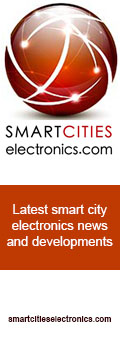Semiconductor testing application guide demonstrates the power of reed relays
Pickering Electronics has announced availability of another in its series of educational application guides for engineers building ATE (automatic test equipment) and test & measurement (T&M) systems, titled: ‘5 Reasons Why Reed Relays are Ideal for Semiconductor Testing’.
This application guide explains more about the critical role of reed relays in semiconductor test, particularly during wafer probe testing. The guide provides insights on using reed relays in semiconductor ATE applications, including Pickering’s top five reasons why reed relays are the ideal switching technology for semiconductor test.
After semiconductor wafers are fabricated, but before they are ‘sliced and diced’ into the dies that will be packaged into components, they are subjected to wafer probe testing. These critical electrical and functional tests are performed by wafer probing machines, a type of automatic testing equipment (ATE) that is used to verify the functionality of the individual dies – be they relatively simple structures, such as diodes and transistors, or more complex integrated circuits (ICs), such as processors, microcontrollers, memory, and analogue to digital converters (ADCs). Such testing helps identify any defects early, confirm functionality, and ensure the quality of dies before they are packaged and used in electronic devices, helping improve yield.
The probes are moved around the wafer to connect with pads on the surface of individual dies and to apply test conditions (voltages, currents, or waveforms, for example) that the ATE supplies – as well as measure voltage levels, current flow, or output waveforms, for example, that the ATE needs to record. Semiconductor test methods include DC parametric testing (at different levels of current and voltage) and AC parametric testing (at different frequencies) – both to ensure the device meets the required specifications – and functional testing to ensure that it operates as intended. For power semiconductor devices, it is necessary to apply and record high voltages, and for high/radio frequency (HF/RF) devices, it is necessary to apply and record appropriate waveforms.



